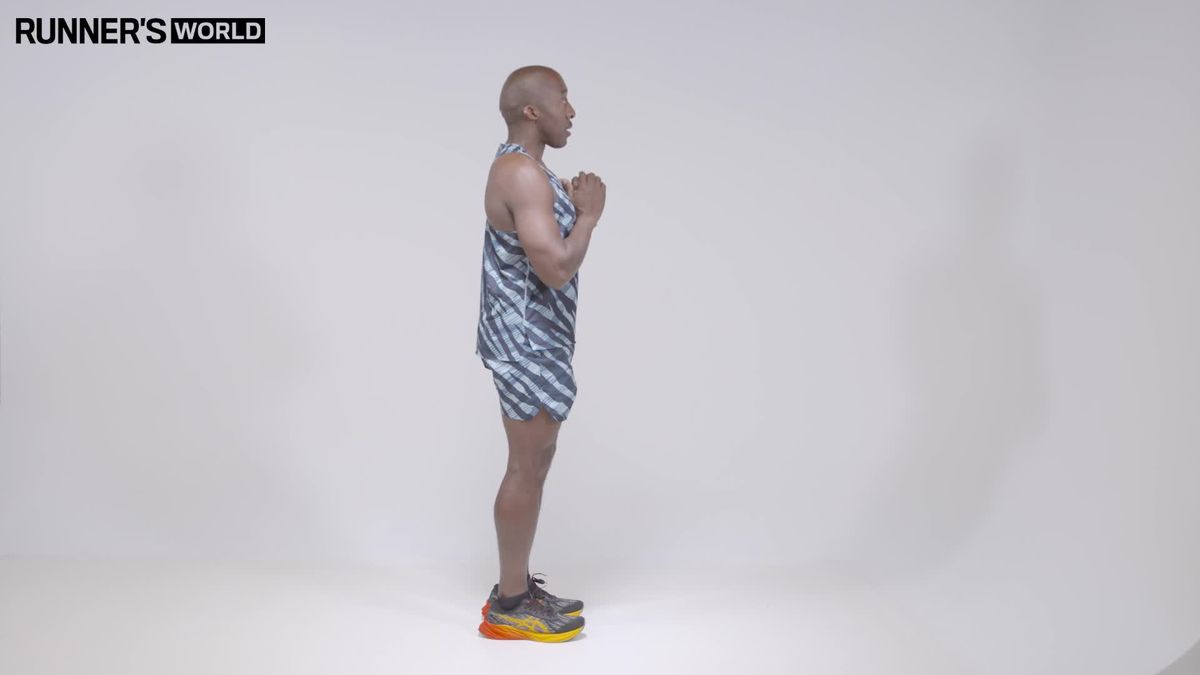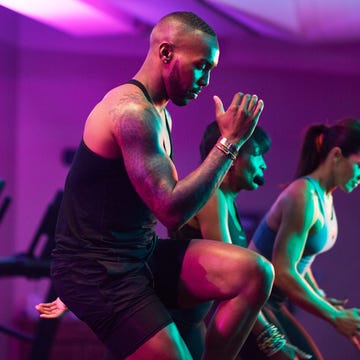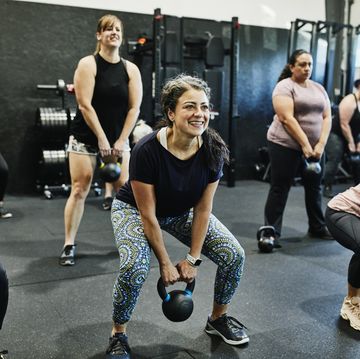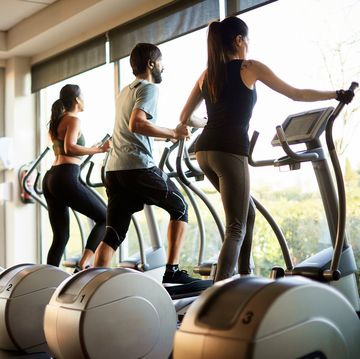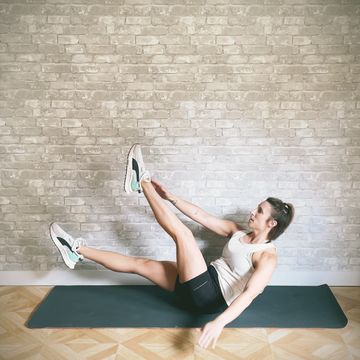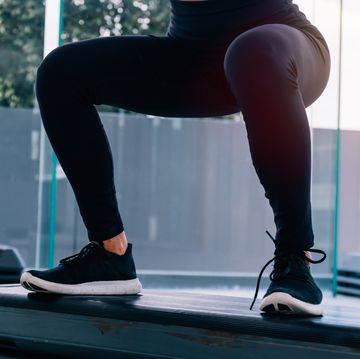Lunges are a key exercise for runners because they are a unilateral movement – ie. one leg is dominant and so replicates the running gait.
When we run, we use just one limb at a time to continuously propel ourselves forward, which requires strength, balance, stability and coordination. So, the more unilateral exercises we can include in our strength workouts, the stronger and more stable we will be when we run. In fact, a 2022 report found that lunges improve exactly those functions: balance, stability, muscle mass, and even optimise the effect of exercise.
‘With lunges, the front leg does most of the work and the back leg is used mainly for balance and control,’ explains Graeme Woodward, a UK Athletics Level 3 performance coach, UKSCA accredited S&C coach and We Run coach for West Yorkshire. ‘The muscle action involved in lunges is also eccentric in nature, which is like running downhill, and the front leg can be loaded to a similar intensity as when doing squats but with lower loads. By lunging to depth, the runner can also develop strength across an increased range of motion, which helps with flexibility and injury risk reduction.’
What everyone's reading
This is backed up by findings that walking lunges improve hamstring strength, while jumping lunges (jumping up and switching the lunging leg while airborne) improve sprint running performance. So, different types of lunges benefit different muscle properties and functions, so essentially improve performance, and one’s propensity to prevent and recover from hamstring injuries.
In other words, including some lunges in your strength training could maximise the benefits reaped from running while also protecting you from injury. What’s not to love about that?
How to do lunges correctly
Forward lunge
- Stand facing forward, hands on hips.
- Lunge forward with your left leg and lower your body by flexing the right knee and hip until your right knee almost touches the floor. Keep your torso upright throughout.
- Your lead knee should point in the same direction as your foot and shouldn’t move further forward than your toes.
- Return to the start position. Repeat with the other leg.
Sets/reps: Two sets of 10-15 lunges.
Reverse lunge
- Stand with your legs shoulder-width apart.
- Step back with your right foot and lower into a lunge – your right knee should almost touch the ground and your left thigh should be parallel to the ground.
- Keep your back straight and your left knee over your toes.
- Return to start position and repeat on the other leg.
Sets/reps: Two sets of 10-15 lunges.
Step-Up Reverse Lunge
Once you've got a standard reverse lunge locked in, why not add a step-up for some extra gains. This brilliant compound move strengthens the quads, glutes and hamstrings and improves coordination and stability
- Stand tall and place one foot on a bench or box (a sturdy box-type surface that’s as tall as mid-shin if you’re a beginner), core engaged.
- Drive up onto the box, fully extending the working leg while pulling the opposite leg into a marching position.
- Return the marching leg to the floor, then step the other leg down from the box and back into a reverse lunge, as above.
Want to up the challenge?
Add a dumbbell to increase the intensity, says personal trainer Colette Nguyen (pictured above). You can also play with tempo and pauses during different parts of the movement to put your balance and power to the test.
Work it in before a run as a dynamic warm-up or tack it onto the end of a strength workout to top off your heavier lifts. Aim for anywhere from six to 10 reps for three sets, depending on how much weight you’re using.


